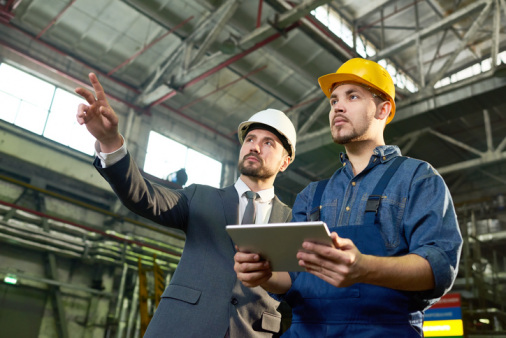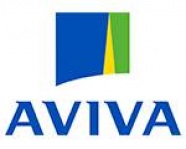Underinsurance - getting declared values for plant and machinery correct

Authored by Aviva
Accurate valuation assessments for plant, equipment and contents are an important element for the protection of any business. And during tough economic times, it’s vital that customers understand the impact that getting it wrong can have.
Charterfields, an Aviva Specialist Partner, are a firm of Chartered Surveyors with specialist industry knowledge, technical skills and practical experience in this space.
We asked Andrew Slevin, Chaterfields Director, to tell us more about the factors impacting plant and machinery valuations and how this may be leading to an increased risk of underinsurance.
“There are several pressing reasons why current declared values, particularly for plant, machinery and contents, may need urgently reviewing:
- Inflation - material costs, labour rates and contractor margins have fluctuated over the last few years.
- Exchange rates - rates continue to be highly volatile. This is having a knock-on effect on UK prices for many materials and equipment.
- Regulation - regulations are continually evolving and these changes may not be reflected in declared current values which are likely to be based on historic costs.
Let’s look at these in more detail.
Inflation
The Consumer Price Index (CPI) is often the figure reported in news headlines. However, this rate doesn’t always correlate to changes in construction or equipment costs.
For example, the UK CPI figure was 9.9% for the year to August 20221. In comparison, the index of goods and materials produced by UK manufacturers (often referred to as ‘factory gate’ prices) was up 16.1%2 over the same period.
This demonstrates the variation in inflation between different asset types over the last couple of years. Significantly, the replacement costs for plant and machinery have varied independently to building reinstatement costs.
Why has this been happening?
Cost increases during 2021 were primarily driven by production capacity constraints, low storage inventories, geopolitics, and rising demand post-covid. In 2022 energy prices have driven many cost increases, with broad-based increases across all fuels.
These rises in oil and gas prices in Europe have led to higher manufacturing costs, particularly for energy intensive industries such as brick and cement manufacture. Increasing energy prices have also driven up the cost of extracting and refining metal ores, particularly for aluminium, iron ore and steel.
What are the forecasts for Inflation?
The Organisation for Economic Co-operation and Development (OECD) forecast that inflation across the Euro area will decline from 7.6% in Q3 2022 to 3.9% in Q4 20233.
The Bank of England expects UK CPI inflation to fall over the next couple of years, aiming to get it down to around 2% within 2 years.4
Overall, much of the focus for central banks is on reducing energy and food costs to bring down CPI. This may not translate into equivalent reductions for construction materials and equipment however, which could continue to see relatively high inflation for some time.
It's important to remember that any reduction in inflation rates will not reverse the changes we've already seen in costs.
Exchange rates
Unlike building construction, plant and machinery is often imported or contains a high degree of imported components. When assessing current costs in the UK for overseas sourced equipment, currency exchange rates therefore heavily influence reinstatement costs.
Currency exchange rates will vary considered on a year-to-year basis or longer period. Taking just one example, the exchange rate between the United States Dollar and the British Pound has changed dramatically recently to the lows we’ve seen in September 2022. Other currencies have seen similar fluctuations.
High Volatility
In the UK, the Office for National Statistics (ONS) shows overall costs for basic metals and fabricated products were up 20.8% in the 12 months to August 20225.
The World Bank indicates that aluminium prices rose6 from around US$ 2,190 per tonne in March 2021 to around US$ 3,498 in March 2022, an increase of 59.7% year on year, yet declined again to $2,430 by August 2022 so, over the 12 months to August 2022, fell 6.6%.
In another example, the London Metals Exchange indicates that the price of copper7 rose from US$ 8,700 per tonne in April 2021 to US$ 9,800 per tonne in April 2022 but has since declined to $7,341 per tonne.
This volatility is causing problems for manufacturers and suppliers and many are erring on the side of caution by increasing prices or guaranteeing quotes for only hours instead of months previously.
Regulations
Regulations are continually under flux and increased expectations or regulations on building standards, noise and emissions limits could significantly drive up the cost to replace an existing facility post loss or even restrict the ability of the facility to be reinstated at all at the same location.
What actions should policyholders take?
High inflation and volatility mean that there is an increased risk that existing declared values are incorrect, leading to underinsurance.
Not only does this mean that ‘day one’ values should be reviewed but loading factors for future cost movements (policy year and reinstatement period) and the sums allowed for demolition and debris removal, may also need attention.
Policyholders ought to conduct careful analysis to arrive at accurate reinstatement costs, particularly for plant and machinery. It’s vital to reflect the appropriate cost movements if updating previous declared values or historic costs.
If a formal independent assessment hasn't been carried out in recent history – three years being the typical period between assessment points - then this would be wise.
The temptation to rely upon a previous assessment or an internal estimate and just to index this for several years, could leave policyholders critically exposed.”
Support available
As one of Aviva’s Specialist Partners, Charterfields are able to provide your Aviva clients with valuation assessments for plant, equipment and contents at a preferential rate.
For more helpful resources, take a look at our new dedicated underinsurance page on Aviva Broker here.
Want to find out more about Charterfields visit their website https://charterfields.com/charterfields-are-a-specialist-partner-of-aviva-insurance/
About Aviva
Aviva Insurance Limited is one of the UK’s leading insurance companies, part of the Aviva group with 34 million customers Worldwide. Aviva Insurance has been in the insurance business for more than 300 years.
In UK commercial, the insurance market remains challenging for insurance brokers and customers, due to the ongoing economic conditions. Aviva Insurance are focusing on improving our processes to ensure Aviva provide commercial customers with insurance cover at an acceptable price. Insurance brokers also recognised our excellent customer service by voting us Insurance Times General Insurer of the Year in 2012, for the second year running. youTalk-insurance sharing Aviva insurance news and video.

